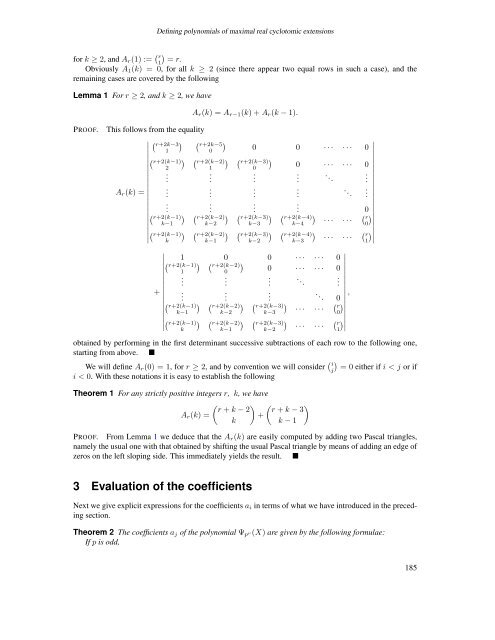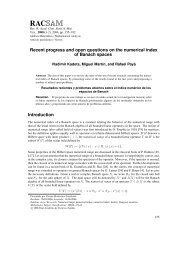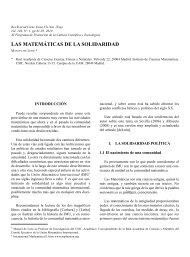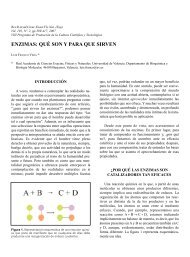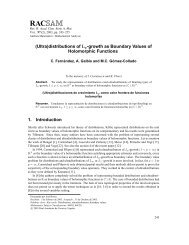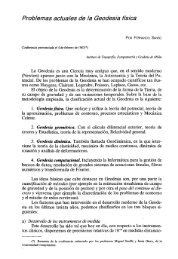On the defining polynomials of maximal real cyclotomic extensions
On the defining polynomials of maximal real cyclotomic extensions
On the defining polynomials of maximal real cyclotomic extensions
You also want an ePaper? Increase the reach of your titles
YUMPU automatically turns print PDFs into web optimized ePapers that Google loves.
Defining <strong>polynomials</strong> <strong>of</strong> <strong>maximal</strong> <strong>real</strong> <strong>cyclotomic</strong> <strong>extensions</strong>for k ≥ 2, and A r (1) := ( r1)= r.Obviously A 1 (k) = 0, for all k ≥ 2 (since <strong>the</strong>re appear two equal rows in such a case), and <strong>the</strong>remaining cases are covered by <strong>the</strong> followingLemma 1 For r ≥ 2, and k ≥ 2, we havePROOF.This follows from <strong>the</strong> equality( r+2k−31( r+2(k−1)2.A r (k) =..( r+2(k−1)k−1(∣ r+2(k−1)+∣kA r (k) = A r−1 (k) + A r (k − 1).) ( r+2k−50)) ( r+2(k−2)1.) ( r+2(k−2)k−2( r+2(k−1)( r+2(k−1)k−1( r+2(k−1)k) ( r+2(k−2)k−1..) ( r+2(k−3)0) ( r+2(k−3)k−3) ( r+2(k−3)k−20 0 · · · · · · 0)0 · · · · · · 0... .. ...... ... 0) ( r+2(k−4))( k−4· · · · · · r 0)) ( r+2(k−4))(k−3· · · · · · r 1)∣1 0 0 · · · · · · 0) ( r+2(k−2))100 · · · · · · 0. ... .. .. ..... 0,) ( r+2(k−2)) ( r+2(k−3))( k−2k−3· · · · · · r 0)) ( r+2(k−2)) ( r+2(k−3))(k−1k−2· · · · · · r ∣1)obtained by performing in <strong>the</strong> first determinant successive subtractions <strong>of</strong> each row to <strong>the</strong> following one,starting from above. We will define A r (0) = 1, for r ≥ 2, and by convention we will consider ( ij)= 0 ei<strong>the</strong>r if i < j or ifi < 0. With <strong>the</strong>se notations it is easy to establish <strong>the</strong> followingTheorem 1 For any strictly positive integers r, k, we have( ) ( )r + k − 2 r + k − 3A r (k) =+kk − 1PROOF. From Lemma 1 we deduce that <strong>the</strong> A r (k) are easily computed by adding two Pascal triangles,namely <strong>the</strong> usual one with that obtained by shifting <strong>the</strong> usual Pascal triangle by means <strong>of</strong> adding an edge <strong>of</strong>zeros on <strong>the</strong> left sloping side. This immediately yields <strong>the</strong> result. 3 Evaluation <strong>of</strong> <strong>the</strong> coefficientsNext we give explicit expressions for <strong>the</strong> coefficients a i in terms <strong>of</strong> what we have introduced in <strong>the</strong> precedingsection.Theorem 2 The coefficients a j <strong>of</strong> <strong>the</strong> polynomial Ψ p ν (X) are given by <strong>the</strong> following formulae:If p is odd,185


